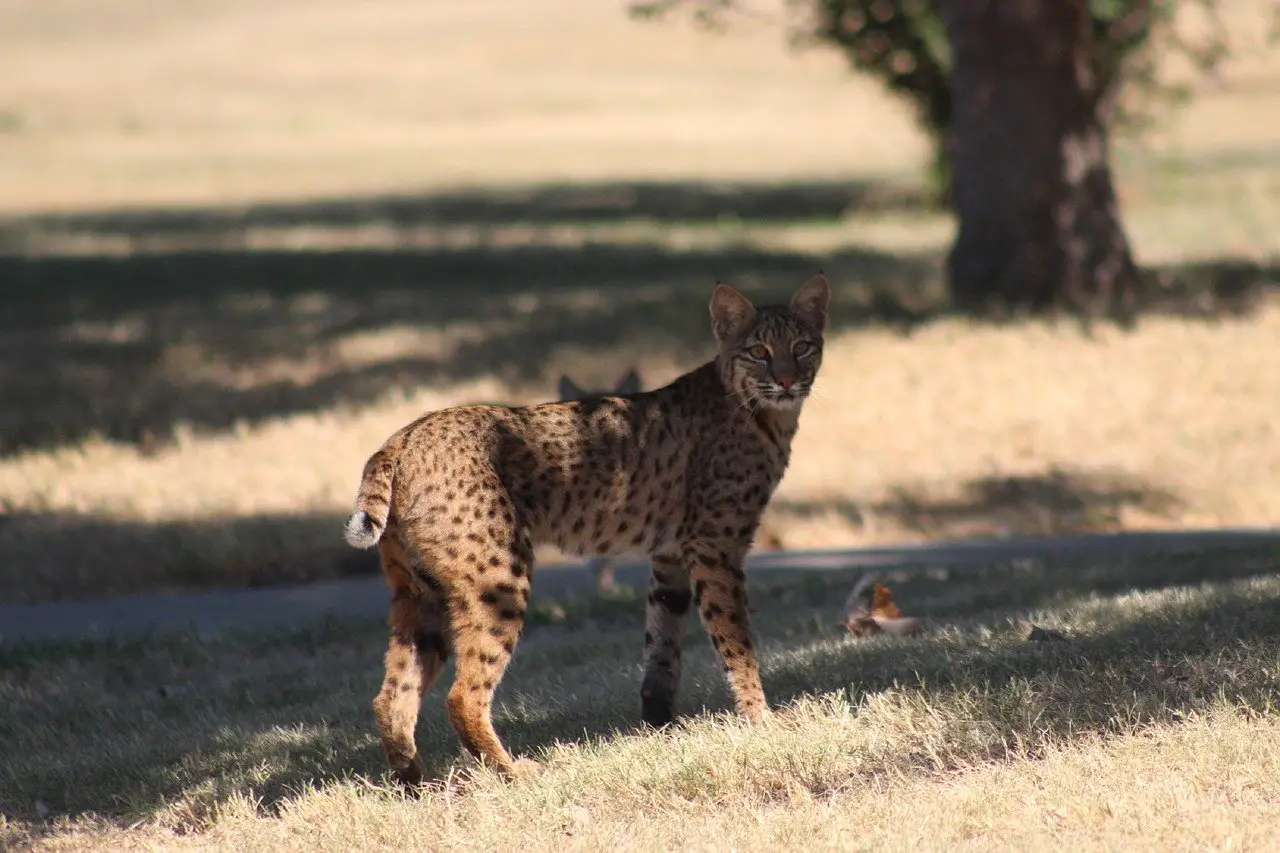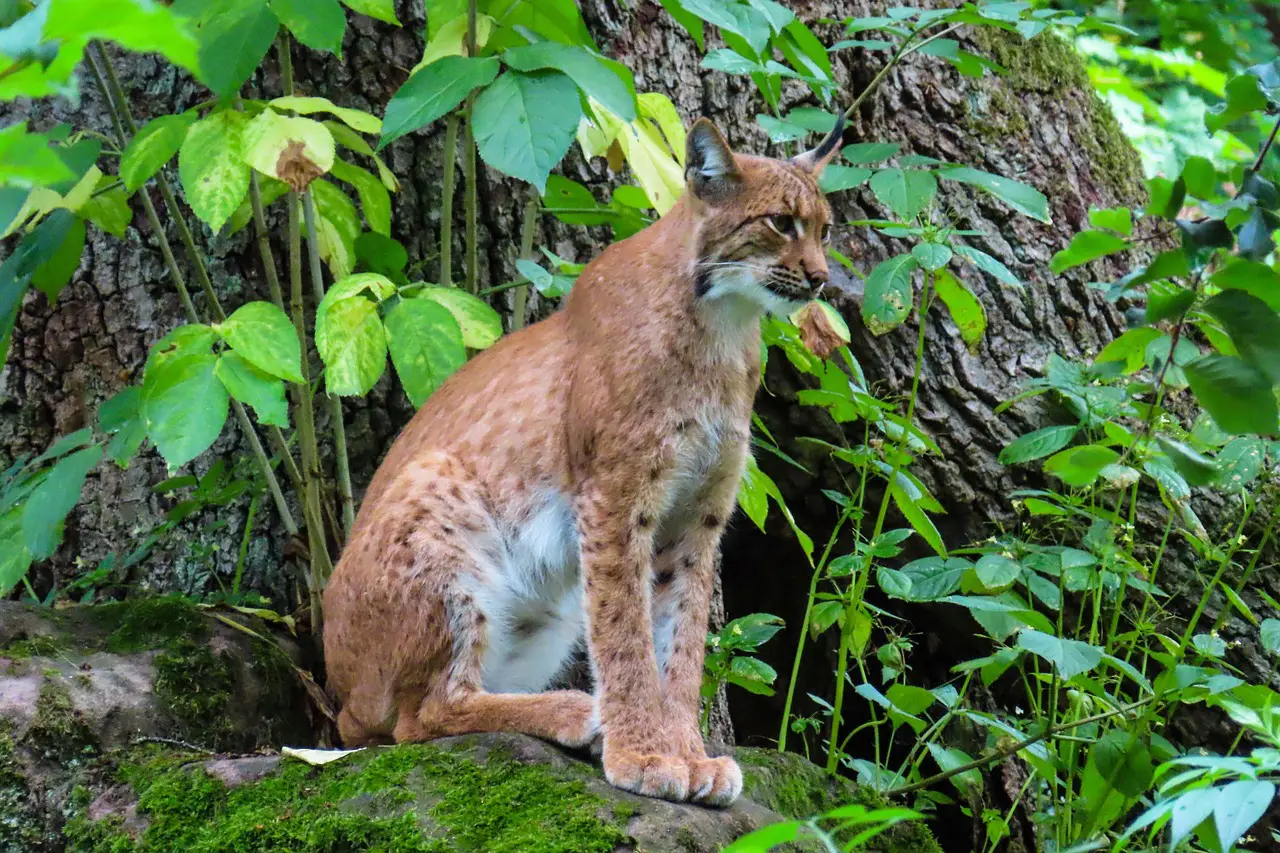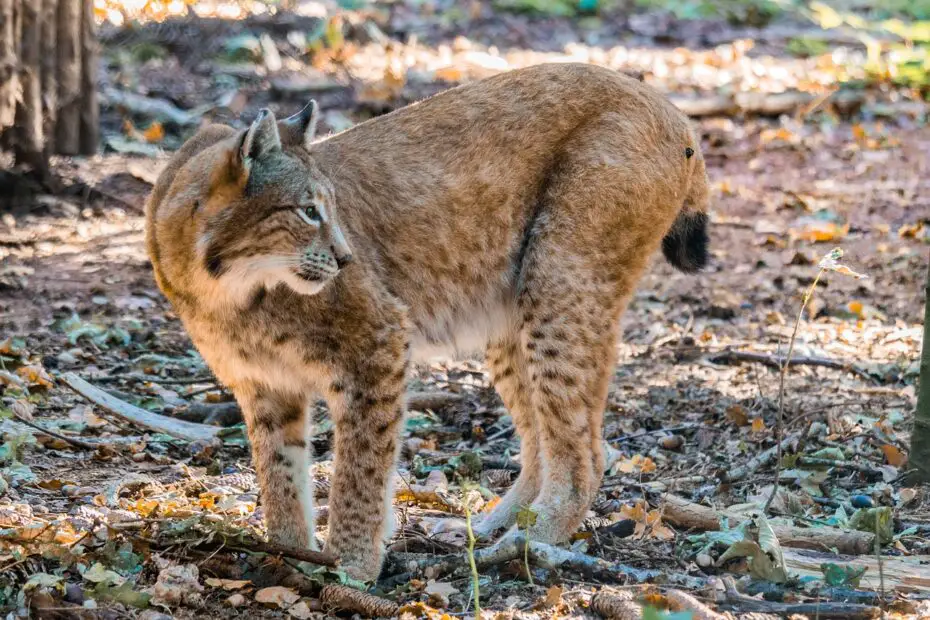What is the Difference Between Lynx and Bobcat? Lynx and bobcat are two captivating feline species that roam the wilderness with an air of mystery. While they may share some similarities in appearance, they are distinct creatures with unique characteristics and behaviors. Understanding the differences between these elusive predators is essential for appreciating their ecological importance. In this article, we will delve into the world of lynx and bobcat, exploring their physical traits, habitat preferences, hunting techniques, and cultural significance.
You may also want to know the difference between a bunny and a rabbit.
Difference Between Lynx and Bobcat: Physical Characteristics
Lynx and bobcat may appear similar at first glance, but closer examination reveals distinct features. Lynx are larger and more robust, measuring up to 32 inches at the shoulder and weighing between 20 to 40 pounds. They possess long legs with large, furry paws, tufted ears, and a short, stubby tail. In contrast, bobcats are slightly smaller, standing around 20 inches at the shoulder and weighing between 15 to 30 pounds. They have shorter legs, smaller ears without prominent tufts, and a bobbed tail, which gives them their name.

Difference Between Lynx and Bobcat: Habitat and Range
Lynx and bobcat have different habitat preferences and ranges. Lynx thrive in remote, northern regions, including boreal forests and mountainous areas. They are well-adapted to snowy environments, with their large paws acting as snowshoes. Lynx populations can be found in North America, Europe, and Asia. On the other hand, bobcats are versatile and adaptable, inhabiting a variety of ecosystems, including forests, deserts, and swamps. They are primarily found in North America, ranging from southern Canada to Mexico.
Difference Between Lynx and Bobcat: Behavior and Hunting
Lynx and bobcats exhibit distinct hunting behaviors. Lynx are renowned for their incredible stalking abilities. They patiently track their prey, relying on their keen senses to detect the slightest movements. When the moment is right, they pounce with remarkable agility, using their powerful legs to deliver a swift and deadly blow. Bobcats, on the other hand, employ a combination of stealth and ambush tactics. They are skilled at patiently waiting for the perfect opportunity to strike, utilizing their excellent camouflage and agility to surprise their prey.
Difference Between Lynx and Bobcat: Diet and Prey
Lynx and bobcat have different dietary preferences. Lynx primarily feed on small to medium-sized ungulates, such as snowshoe hares and deer. They have a remarkable ability to detect and locate their preferred prey, even beneath layers of snow. Bobcats, on the other hand, are more versatile hunters. Their diet includes a wide range of animals, including rabbits, rodents, birds, and even deer in some cases. They are opportunistic predators, adapting their hunting strategies to the availability of prey in their habitats.
Reproduction and Life Cycle
Lynx and bobcat have different reproductive patterns and life cycles. Female lynx give birth to a litter of one to four kittens after a gestation period of approximately 60-70 days. The young lynx remain with their mother for up to two years, learning essential hunting skills before venturing out on their own. Bobcats also have a similar reproductive pattern, with a gestation period of around 60-70 days. However, bobcat kittens become independent at a younger age, typically around nine months old.
Conservation Status
The conservation status of lynx and bobcat varies across their respective ranges. Lynx populations face various conservation challenges, particularly in regions where habitat loss and fragmentation are prevalent. Certain lynx species, such as the Iberian lynx, are critically endangered. On the other hand, bobcats are more resilient, with stable populations throughout much of their range. However, habitat destruction and increased human-wildlife conflict pose potential threats to their long-term survival.

Interactions with Humans
Human encounters with lynx and bobcats are relatively rare due to their elusive nature. Both species typically avoid contact with humans. However, instances of conflicts can occur when their habitats overlap with human settlements. Lynx, especially in areas with dense human populations, may face habitat loss, poaching, and road mortality. Bobcats, although more adaptable, can occasionally prey on livestock or pets, leading to conflicts with landowners. Implementing effective conservation strategies and promoting coexistence between humans and these felines is crucial for their continued survival.
Cultural Significance and Mythology
Throughout history, lynx and bobcats have held cultural significance and played roles in various mythologies. Lynx, with their piercing eyes and enigmatic presence, have been associated with attributes such as wisdom, foresight, and stealth in several indigenous cultures. They are often revered as mystical beings and are woven into the fabric of folklore and legends. Bobcats, too, hold symbolic value in certain traditions, representing independence, adaptability, and survival instincts.
Conclusion
In conclusion, while lynx and bobcat may share some physical resemblances, they are distinct feline species with unique characteristics and behaviors. Understanding the differences between these magnificent predators enhances our appreciation for their ecological roles and cultural significance. By valuing and protecting their habitats, we can ensure the continued existence of these enigmatic creatures in the natural world.
FAQs
- How can you tell the difference between a lynx and a bobcat? The key differences between a lynx and a bobcat lie in their size, physical features, and habitat preferences. Lynx are larger, have tufted ears, and inhabit northern regions, while bobcats are smaller, have shorter ears, and have a wider range across North America.
- Are lynx and bobcats dangerous to humans? Lynx and bobcats are typically not a threat to humans. They tend to avoid human contact and only resort to defensive measures if cornered or provoked. It’s important to give these animals their space and appreciate them from a distance.
- Do lynx and bobcats have overlapping territories? While there may be some overlap in their habitats, lynx and bobcats generally prefer different regions. Lynx favor colder, northern environments, while bobcats have a broader range across various ecosystems in North America.
- Can lynx and bobcats interbreed? Lynx and bobcats belong to different species and do not interbreed in the wild. However, in captivity, hybridization between these species is possible but relatively rare.
- What is the biggest threat to the survival of lynx and bobcat populations? Habitat loss, fragmentation, and human-induced disturbances pose significant threats to the survival of both lynx and bobcat populations. Conservation efforts focusing on habitat preservation and minimizing human-wildlife conflicts are crucial for their long-term survival.
